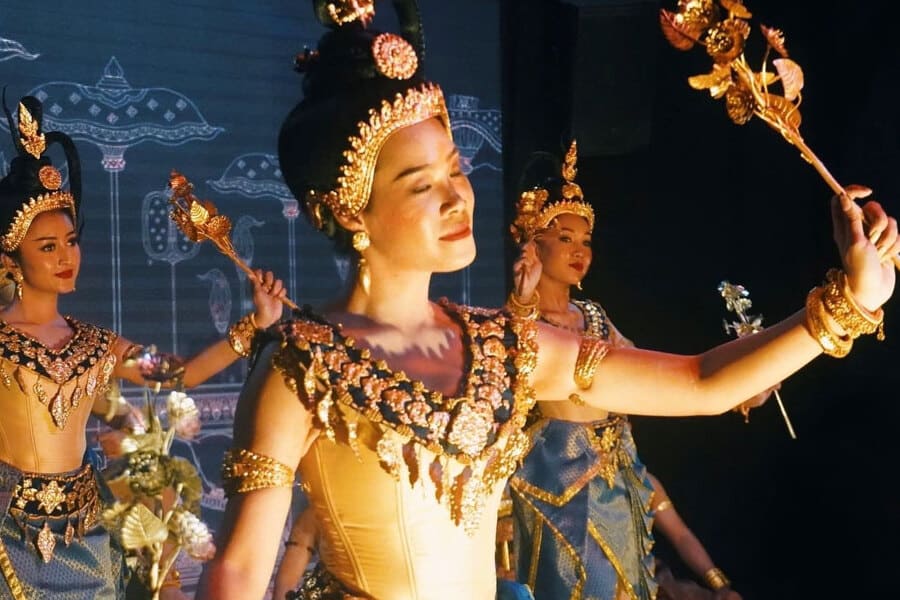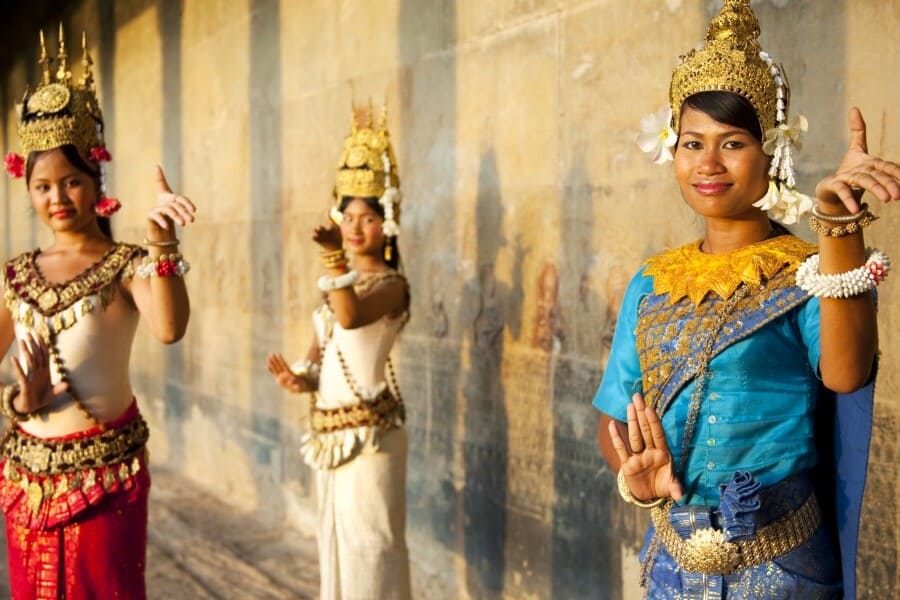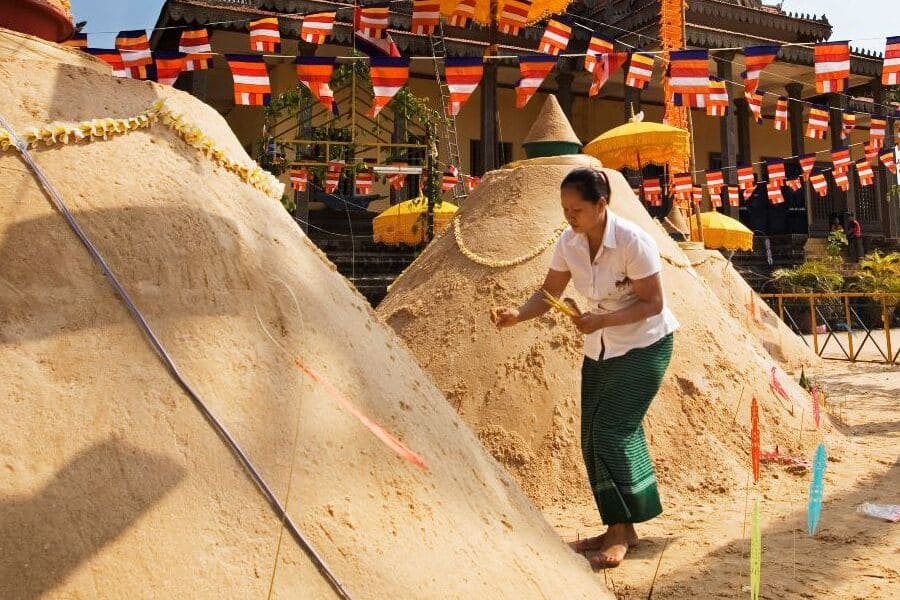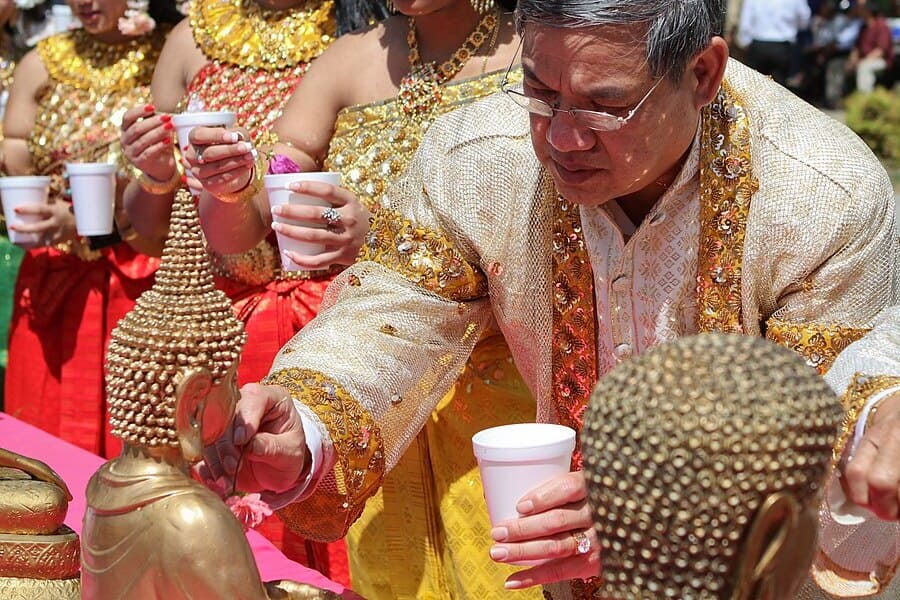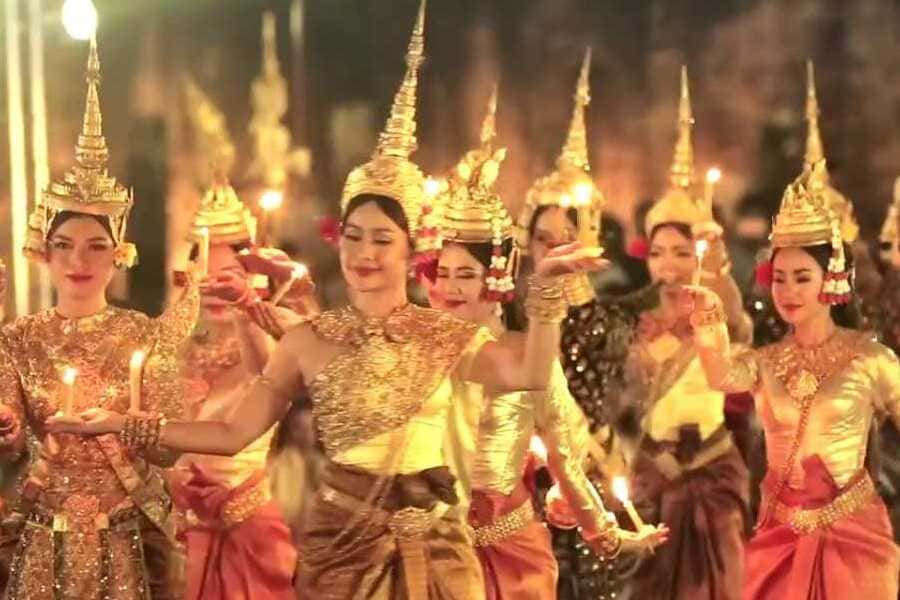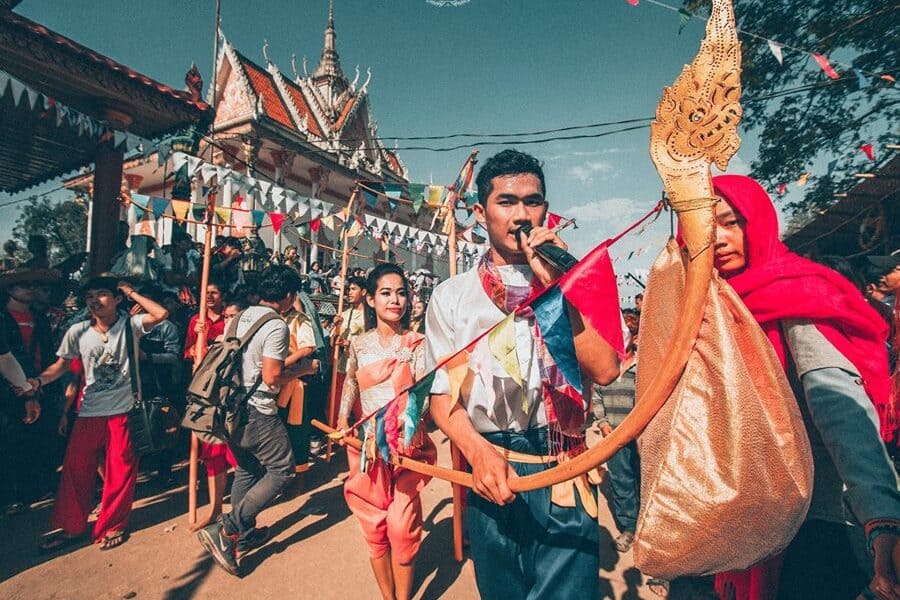Embark on a cultural journey through the heart of Cambodia as we delve into the vibrant tapestry of Cambodian New Year traditions and celebrations. Steeped in ancient customs and rich symbolism, Cambodian New Year, known as "Choul Chnam Thmey," offers a captivating glimpse into the soul of this dynamic nation. Join us on this exploration of rituals, festivities, and cultural heritage, where every tradition carries a story, and every celebration reflects the resilience and spirit of Cambodia.
Contents
Overview of Cambodia New Year
The origins and history of Cambodia New Year
The origins and history of Cambodian New Year, known locally as "Choul Chnam Thmey," are deeply rooted in the rich cultural tapestry of Cambodia, spanning centuries of tradition, spirituality, and community. Dating back to ancient times, Cambodian New Year holds a significant place in the hearts and minds of the Cambodian people, symbolizing renewal, purification, and the cyclical nature of life.
The origins of Cambodian New Year can be traced back to the ancient agrarian traditions of the Khmer civilization, where the cycle of planting and harvesting was closely intertwined with the lunar calendar. The transition from one year to the next was marked by the end of the dry season and the arrival of the monsoon rains, symbolizing the renewal of life and the promise of abundance.
With the spread of Buddhism in Cambodia, Cambodian New Year became infused with spiritual significance, drawing upon Buddhist teachings of impermanence, karma, and the pursuit of enlightenment. The holiday became an occasion for merit-making, where individuals would engage in acts of generosity, kindness, and devotion to accumulate positive karma for the year ahead.
Over the centuries, Cambodian New Year evolved into a multi-day celebration encompassing a rich tapestry of rituals, customs, and festivities. The holiday typically falls in mid-April, coinciding with the end of the traditional harvest season and the beginning of the Khmer lunar calendar year.
Throughout its history, Cambodian New Year has endured periods of upheaval, conflict, and societal change, yet it has remained a cherished and integral part of Cambodian identity. Today, Cambodian New Year continues to be celebrated with joy, reverence, and a deep sense of cultural pride, serving as a testament to the resilience and spirit of the Cambodian people.
As we delve deeper into the origins and history of Cambodian New Year, we gain a deeper appreciation for the traditions, values, and cultural heritage that define this auspicious holiday. It is a time to honor the past, celebrate the present, and embrace the promise of a new beginning, as Cambodia welcomes the arrival of another year with open hearts and joyful spirits.
Date and duration of Cambodia New Year
Cambodian New Year typically falls in mid-April, according to the Khmer lunar calendar. The exact dates may vary slightly each year based on lunar calculations, but the celebration usually spans over three days.
The three-day celebration of Cambodian New Year includes:
Maha Songkran
This is the first day of the new year and is marked by religious ceremonies, offerings, and visits to pagodas to pray for blessings and prosperity. It is also a time for families to gather, clean their homes, and prepare for the festivities ahead.
Virak Wanabat
The second day of Cambodian New Year is a time for charitable acts, including making donations to monks and temples, as well as offering food to the less fortunate. It is a day of reflection and gratitude for the blessings of the past year.
Tngai Loeng Sak
The third and final day of Cambodian New Year is dedicated to spending time with family and friends, enjoying festive meals, and participating in community events. It is a time to celebrate the new year with joy, laughter, and camaraderie.
The highlight of Cambodian New Year celebrations is the Water Festival, or "Bon Om Touk," which takes place on the first day of the lunar new year. This iconic festival features boat races, water games, and colorful processions along rivers and lakes, symbolizing the importance of water in Cambodian culture and agriculture.
Traditional Customs and Practices in Cambodia New Year
These customs and practices are observed over the three-day celebration and hold significant spiritual and social meaning for the Cambodian people. Here are some of the traditional customs and practices observed during Cambodian New Year:
Offerings at Pagodas
One of the central customs of Cambodian New Year is the offering of prayers, incense, and food at local pagodas. Devout Buddhists visit pagodas to make merit, seek blessings from monks, and pay homage to the Buddha. This practice is believed to bring good luck, prosperity, and spiritual purification for the coming year.
Bathing of Buddha Statues
Another important tradition during Cambodian New Year is the ceremonial bathing of Buddha statues with scented water. This symbolic act is believed to cleanse the statues of any accumulated sins or impurities and to bring blessings and prosperity to the community.
Household Cleanliness
Cambodian families thoroughly clean their homes in preparation for Cambodian New Year, sweeping away any negative energies from the past year and making way for fresh beginnings. Homes are adorned with flowers, incense, and traditional decorations to welcome the new year in a spirit of purity and renewal.
Family Reunions
Cambodian New Year is a time for family reunions and gatherings, as people travel from near and far to be together during the holiday. Families come together to share meals, exchange blessings, and participate in traditional rituals, strengthening bonds and fostering a sense of unity and solidarity.
Merit-Making
Cambodian New Year is considered an auspicious time for merit-making, where individuals engage in acts of generosity, kindness, and charity to accumulate positive karma for the year ahead. This may include making donations to temples, offering alms to monks, or helping those in need within the community.
Traditional Foods
Cambodian New Year is celebrated with an array of traditional foods and treats, each carrying symbolic significance. Sticky rice cakes, known as "num ansom chrouk," and fried banana fritters, known as "tirk pdei," are commonly enjoyed during the holiday, symbolizing prosperity, abundance, and sweetness in the coming year.
Water Festival
The Water Festival, or "Bon Om Touk," is a highlight of Cambodian New Year celebrations, taking place on the first day of the lunar new year. This iconic festival features boat races, water games, and colorful processions along rivers and lakes, symbolizing the importance of water in Cambodian culture and agriculture.
These traditional customs and practices are cherished by the Cambodian people and are passed down from generation to generation, serving as a reminder of the rich cultural heritage and spiritual significance of Cambodian New Year.
Traditional Foods and Treats in Cambodia New Year
During Cambodia New Year, families gather to enjoy a variety of traditional foods and treats that hold symbolic significance and add to the festive atmosphere of the holiday. These dishes are prepared with care and served with the hope of bringing prosperity, abundance, and happiness in the new year. Here are some of the most popular traditional foods and treats enjoyed during Cambodia New Year:
- Num Ansom Chrouk: Num ansom chrouk is a traditional Cambodian dish made of sticky rice, pork, and coconut milk, wrapped in banana leaves and steamed until tender. The dish is savory and slightly sweet, symbolizing prosperity and good fortune in the coming year.
- Tirk Pdei: Tirk pdei are fried banana fritters made from ripe bananas coated in a batter of rice flour, sugar, and sesame seeds, then deep-fried until golden brown. These crispy treats are enjoyed as a sweet snack during Cambodia New Year, symbolizing happiness, sweetness, and good luck.
- Num Kom: Num kom are bite-sized rice cakes made from glutinous rice flour, coconut milk, and sugar, steamed in small molds and topped with grated coconut. These delicate cakes are often colored with natural dyes and adorned with edible flowers, making them both visually appealing and delicious. Num kom symbolize purity, renewal, and prosperity in the new year.
- Sach Ko Ang: Sach ko ang is a traditional Cambodian beef skewer dish marinated in a flavorful mixture of garlic, lemongrass, and spices, then grilled to perfection. These savory skewers are often served alongside fresh vegetables and a tangy dipping sauce, making them a popular choice for festive gatherings during Cambodia New Year.
- Prahok Ktiss: Prahok ktiss is a traditional Cambodian dip made from fermented fish paste, coconut milk, pork, and spices, cooked together until thick and creamy. This rich and savory dip is typically served with fresh vegetables, rice cakes, or crispy rice crackers, making it a favorite appetizer for Cambodia New Year celebrations.
- Trey Pdei: Trey pdei, or "special fish," is a traditional Cambodian dish made from whole fish marinated in a fragrant mixture of lemongrass, turmeric, and kaffir lime leaves, then grilled or fried until crispy. This dish is believed to bring prosperity and abundance in the new year, as fish symbolize wealth and good fortune in Cambodian culture.
What to do and see during the Cambodian New Year?
Embark on unforgettable cambodia trips during Cambodia New Year and delve into vibrant cultural celebrations. This auspicious holiday offers visitors the chance to immerse themselves in unique traditions and festivities. Here are some activities and attractions to enjoy during Cambodia New Year:
Attend Pagoda Ceremonies:
Visitors can join locals in visiting pagodas to participate in traditional ceremonies, offer prayers, and seek blessings from Buddhist monks. This provides a glimpse into Cambodian spirituality and offers a chance to experience the spiritual side of Cambodia New Year.
Witness the Water Festival:
The Water Festival, or "Bon Om Touk," is a highlight of Cambodia's New Year celebrations. Visitors can witness exhilarating boat races, colorful processions, and water-based activities along rivers and lakes in cities like Phnom Penh and Siem Reap. It's a fantastic opportunity to witness the vibrancy and energy of Cambodian culture
Explore Local Markets and Festivals:
Throughout Cambodia New Year, vibrant street markets and cultural festivals spring up in towns and cities across the country. Visitors can explore these lively markets, sample traditional foods and treats, shop for souvenirs, and immerse themselves in the festive atmosphere.
Participate in Community Events:
Many communities organize special events and activities during Cambodia New Year, such as traditional dance performances, live music concerts, and cultural exhibitions. Visitors can participate in these events, interact with locals, and learn more about Cambodian customs and traditions.
Enjoy Traditional Foods and Treats:
Cambodia New Year is a time for feasting and indulging in traditional Cambodian cuisine. Visitors can sample a variety of delicious foods and treats, such as sticky rice cakes, fried banana fritters, and savory beef skewers, at local restaurants, street stalls, and festive gatherings.
Witness Traditional Customs and Rituals:
Visitors can observe and learn about traditional Cambodian customs and rituals associated with Cambodia New Year, such as the ceremonial bathing of Buddha statues, the offering of prayers and blessings, and the symbolic cleansing of homes and communities.
By exploring the customs, rituals, and significance of Cambodian New Year, we gain a deeper appreciation for the traditions that unite communities and celebrate renewal and hope. As the country comes together to honor its cultural roots and welcome the New Year, we are reminded of the importance of cultural understanding and the power of shared celebrations in fostering unity and connection. May this knowledge inspire us to embrace diversity and participate in the joyous spirit of Cambodian New Year, wherever we may be.


